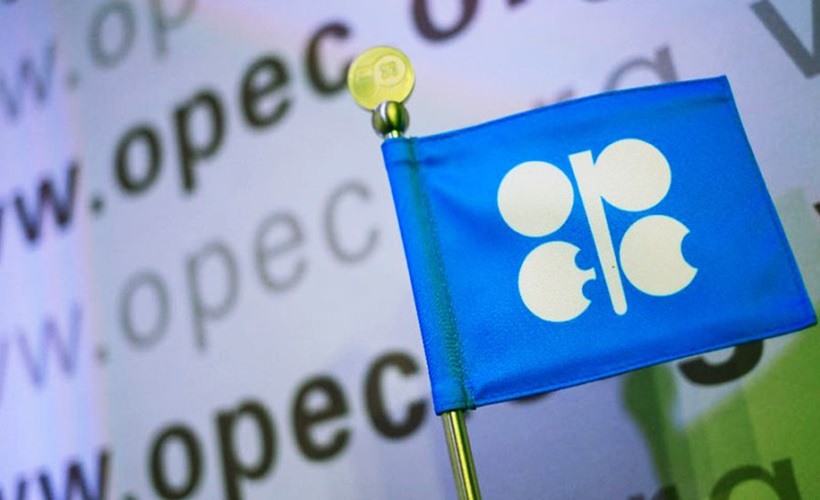Tue 10 March 2020:
Oil prices suffered a dramatic collapse in early trading on Monday after talks between OPEC members and Russia fell apart, leading to the opening salvo in a price war that could see oil prices decline further.
Futures prices of Brent crude fell over 25 percent to around $33 per barrel in Monday morning trading, while North America’s WTI crude dropped to around $29 per barrel in the worst day of trading for both futures contracts since 1991. In the Middle East, stock markets plummeted across the board for the second day in a row, while global stocks fell sharply as panicked investors flee equities for safe havens.
The Organization of the Petroleum Exporting Countries (OPEC) and non-member allies, led by Russia, known as the OPEC+ alliance, had committed to an output cut agreement to stabilize prices. The group fell apart on Friday following discussions over further output cuts to prop up prices following coronavirus-fueled demand fall.
“From April 1 neither OPEC nor non-OPEC have restrictions,” Russian Energy Minister Alexander Novak told reporters.
OPEC+ origins
The OPEC+ group was formed in 2016 following a fall in the price of oil from a peak of $115 per barrel in mid-2014 to a low of $29 per barrel by the start of 2016.
Following an agreement, OPEC and 10 additional countries, including Russia, began limiting their output and maintained high compliance with the agreement.
Over the next three years, the OPEC+ group managed to keep world markets relatively stable, between $50 and $75 per barrel, although compliance had become an issue. Some countries, including Russia, slipped on compliance, meaning they were producing more oil than they had agreed to, while Saudi Arabia continued to over-comply, producing less than the agreed rate, in addition to shouldering most of the cuts.
The International Energy Agency (IEA) estimated in its January 2020 Oil Market Report that while Russia had achieved an average compliance of 72 percent, Saudi Arabia’s compliance sat at 268 percent.
With the output cut agreement no longer in place, Russia and Saudi Arabia are left in a similar pre-OPEC+ position. They, along with other major producers, battled for market share and tried to push out more expensive US shale oil producers from the market.
Saudi Arabia announced massive discounts of between $6 and $8 per barrel as it prepares to open up the Kingdom’s spigots. The Kingdom has by far the largest spare capacity of any oil producing nations, with around 2.32 million barrels per day of spare capacity, according to figures from the IEA. The UAE has the next highest spare capacity in OPEC, with 0.33 million barrels per day.
This huge idle capacity means that Saudi Arabia would be able to take market share from competing producers, such as Russia or US shale oil producers. It remains to be seen as to how much muscle the Kingdom will throw into the ring.
“Russia’s breakeven is apparently $40 a barrel, and it has accumulated reserves over the past few years. Whether it has deeper pockets than Saudi Arabia is a matter of debate. I doubt so. I cannot give you an estimate on Russia’s ability to withstand a price war,” said Jeffrey Halley, senior market analyst – Asia Pacific for OANDA, a forex trading platform.
Saudi’s historical precedent
To understand the scale of how this could affect the price of oil, a similar dynamic occurred in November 1997. OPEC took the decision to boost output while ignoring a bubbling emerging market crisis. Similarly, this weekend, OPEC has elected to end output controls while demand remains dampened amid coronavirus fears. Economists have already suggested that the coronavirus will likely lead to a global recession in 2020.
As Saudi Arabia and OPEC opened its supply tap in 1998, while the global economy slowed, Brent future prices collapsed to under $10 a barrel. This figure represents an oil market that was glutted with oversupply, a situation that markets might not be far off of should producers pump with abandon.
More context can be learned from earlier in history. In the 1980s, Saudi Arabia slashed its production by over 75 percent in a bid to prevent a drop in oil prices, dropping from more than 10 million barrels per day in output in 1980 to less than 2.5 million barrels per day five years later.
In 1985, after years of other OPEC members failing to support the market, Saudi Arabia opened up its supply tap, pushing other producers out, and dropping oil prices to under $10 per barrel. Saudi Arabia regained its role as the preeminent oil producer and supplier.
This war for market share might return following the collapse of the OPEC+ alliance, and with it the question of the staying power of the combatants.
The Kingdom produces oil at the cheapest cost of any major producer, and has some of the largest oil reserves in the world. Saudi Arabia also has huge financial reserves to support it through a lean period. Saudi Aramco, the state energy company, reported that it costs just $2.80 to pump a barrel of crude.
Russia meanwhile has lower financial reserves, and the cost of producing oil by Russian energy firm Rosneft is estimated slightly higher, at $3.10 per barrel.
The Russian Ministry of Finance said on Monday that the country had sufficient reserves to withstand six to 10 years of oil prices between $25 and $30. It remains to be seen, however, how low the price will eventually go.
-Source: alarabiya.net
Think your friends would be interested? Share this story!





